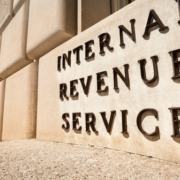Maximizing Benefits for Developers with the §45L Tax Credit
The §45L Energy-Efficient Tax Credit presents a fantastic opportunity to slash your tax bill while creating eco-friendly living spaces.
Not only does §45L contribute to a healthier environment by reducing greenhouse gas emissions and total energy consumption, but it also offers significant financial benefits to developers. If you are the developer of apartments, condominiums, single-family homes, multi-family residences, or assisted living facilities, you could be leaving money on the table if you don’t take advantage of this credit.
In this comprehensive blog, we will explore strategies to maximize the §45L tax credit, highlighting expertise from Walker Reid.
Understanding the §45L Tax Credit
The §45L tax credit, let’s first understand what it entails. The §45L tax credit, introduced by the IRS and enhanced by the Inflation Reduction Act of 2022, offers compelling incentives for developing energy-efficient homes. Developers stand to benefit significantly, with tax credits ranging from $500 to $5,000 per qualifying dwelling unit.
However, there’s a crucial caveat: to maximize your credit, your project must meet the IRS’s stringent energy-efficiency standards. Eligible properties must meet specific energy-saving requirements, such as reducing heating and cooling energy consumption.
Expanding Opportunities: Changes in Qualifying Standards
In 2023, the §45L Tax Credit underwent significant changes, opening up new opportunities for developers to capitalize on sustainable building practices. Homes certified under energy efficiency programs such as ENERGY STAR Residential New Construction or the ENERGY STAR Manufactured New Homes program are now eligible for the credit. Additionally, the introduction of the Zero Energy Ready Homes Program (ZERH) has elevated the potential benefits, with qualifying units eligible for a higher credit of $5,000.
One of the most appealing aspects of the §45L Tax Credit is its applicability across various housing types. Whether you’re developing multifamily apartment buildings, assisted living facilities, condos, single-family homes, or townhome developments, you can leverage this incentive to your advantage. From three-story apartment complexes to cozy suburban townhouses, sustainable design principles can be integrated into projects of all sizes and scopes.
Extending Benefits Through 2032
The recent extension of the §45L Tax Credit through 2032 provides developers a long-term incentive to prioritize energy efficiency in their projects. By committing to sustainable building practices now, developers can enjoy immediate tax benefits and position themselves for continued success in the years to come. Furthermore, multifamily projects, including high-rise developments, ensure that developers across various sectors can participate in the program.
Embracing Sustainability for Long-Term Success
Beyond the financial incentives, developers must embrace sustainability in their projects. As climate change concerns continue growing, consumers increasingly demand eco-friendly housing options. By prioritizing energy efficiency and sustainable design, developers can meet regulatory requirements and attract environmentally conscious tenants and buyers, enhancing the desirability and longevity of their properties.
Navigating the Legacy §45L Program
To qualify for the Legacy §45L Tax Credit, your property must meet specific energy-saving requirements. Moreover, credits can only be taken on timely filed tax returns or within the open three-year window for amendment.
If you’re aiming to cash in on the benefits of the Legacy §45L tax credit for your residential development projects completed before January 1, 2023, you need to ensure you meet the certification requirements, which are as follows:
- To qualify for the Legacy §45L tax credit, eligible contractors must obtain certification from an independent certifier, accredited by the Residential Energy Services Network (RESNET) (or an equivalent rating network).
- Your certification must conduct both computer modeling and on-site testing to assess the energy efficiency of your dwelling units. Once complete, they’ll compile a comprehensive certification package, complete with a declaration attesting to the accuracy of the information provided, ensuring that your tax credit claim is supported by expert analysis and documentation.
At Walker Reid, we specialize in helping developers navigate the complexities of the Legacy §45L tax credit program. Here’s how we can help:
- We will gather data and provide a no-cost feasibility analysis.
- Then, we will follow IRS-prescribed inspection and modeling criteria to validate the efficiency of the units.
- Upon completion, we will provide a third-party certification report.
Schedule a Consultation
Ready to maximize your benefits with the §45L tax credit? Schedule a free consultation with a Walker Reid expert today. If you are seeking to optimize project profitability, our team is here to help you navigate the intricacies of the §45L tax credit and unlock the full potential of energy-efficient living.
The time to seize the opportunity presented by the §45L tax credit is now. This crucial incentive offers developers a valuable opportunity to reap financial rewards while contributing to a more sustainable future. By understanding eligibility criteria, leveraging strategic approaches, and partnering with experienced professionals like Walker Reid Strategies, you can maximize the benefits of energy-efficient home development construction and positively impact your finances and the environment.









